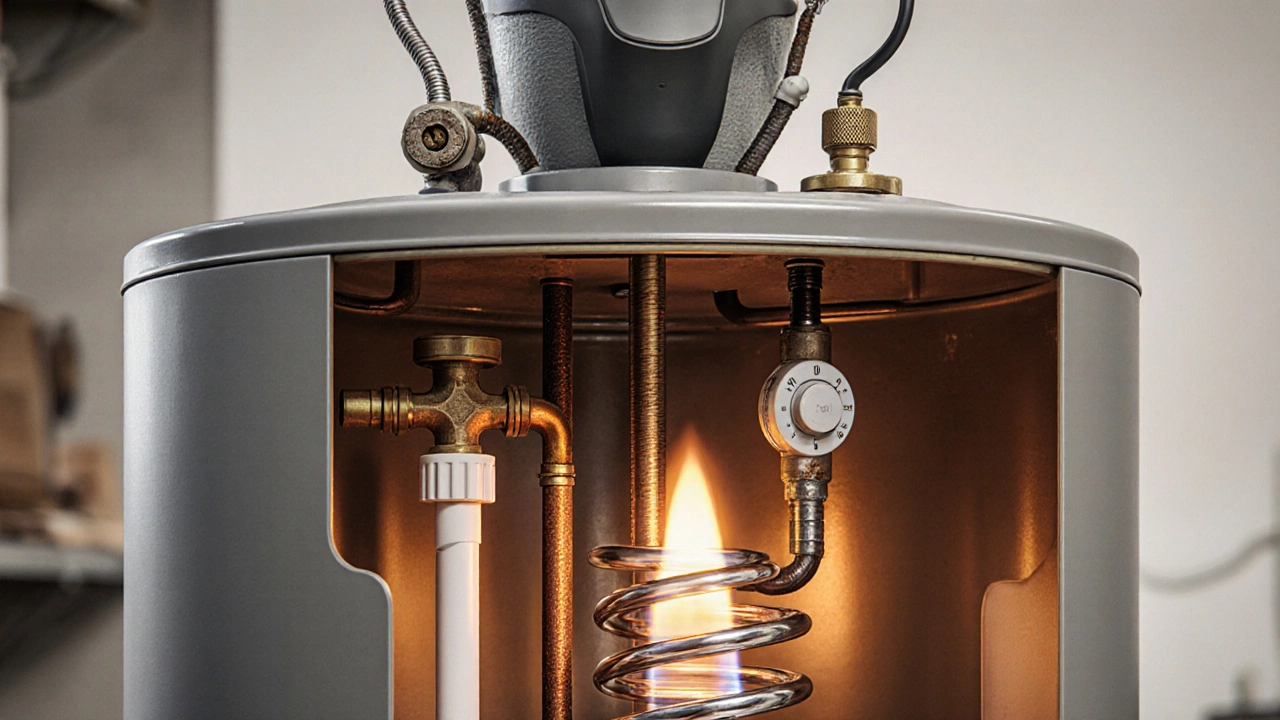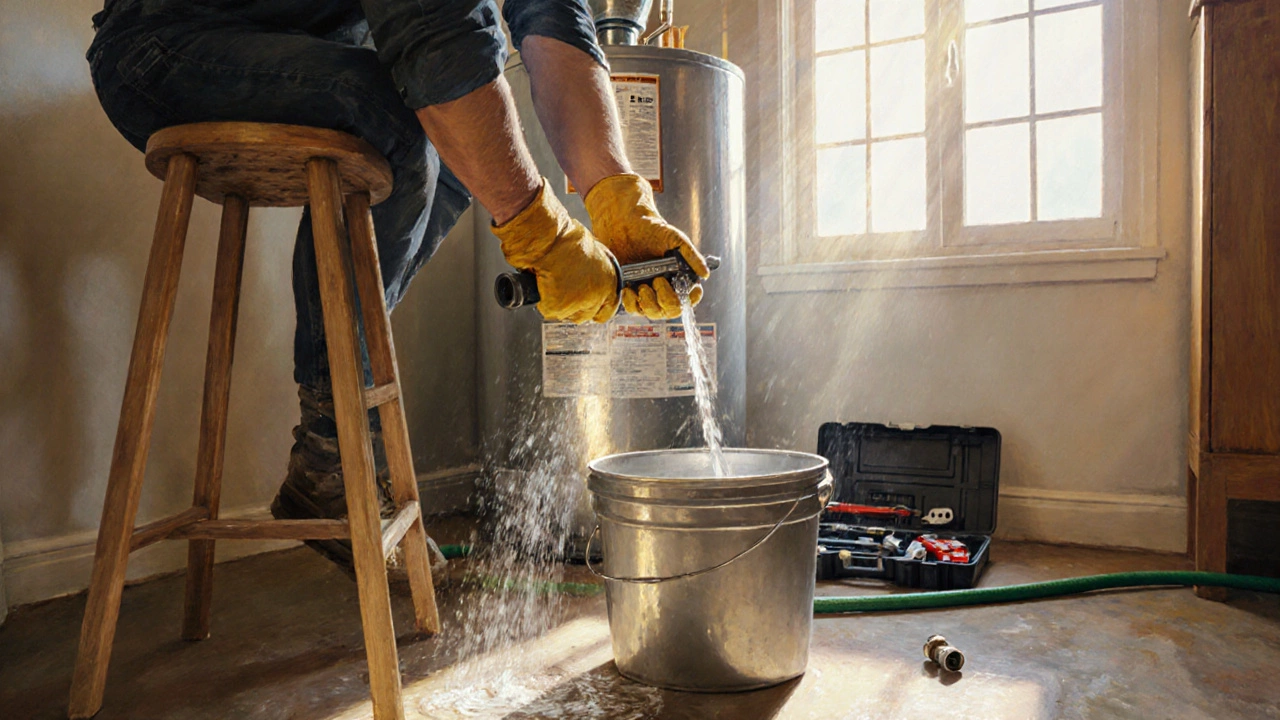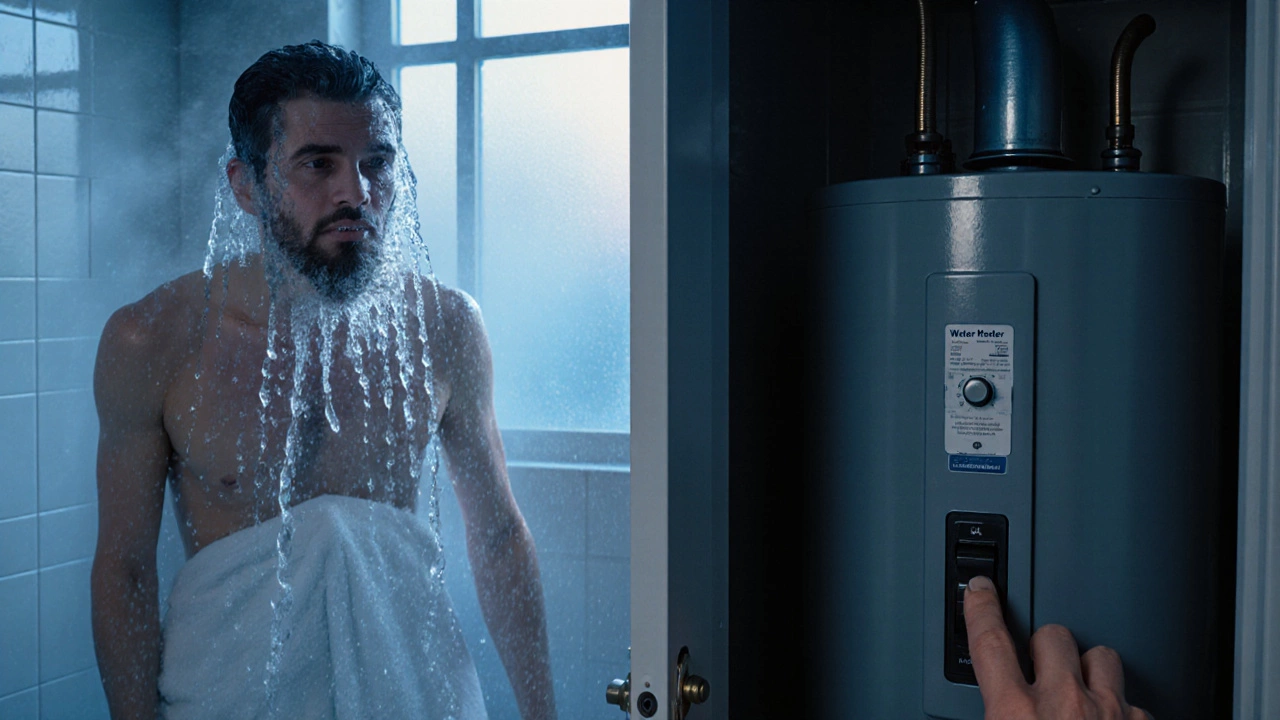Key Takeaways
- Check the power or gas supply before opening the unit.
- Most cold‑water issues stem from a failed thermostat, heating element, or gas valve.
- Simple tests like resetting the breaker or flushing the tank can restore heat.
- If the problem persists after basic checks, call a licensed plumber.
When your cold water water heater refuses to deliver hot water, it feels like a disaster. You’re left shivering in the shower, and every appliance that depends on hot water grinds to a halt. The good news is that most cold‑water problems have a clear cause and a doable fix. In the sections below, we’ll walk through how a water heater works, the top reasons it can only give you cold water, and a step‑by‑step troubleshooting plan you can follow at home.
How a Typical Water Heater Works
Understanding the basic parts helps you pinpoint what’s wrong. The most common residential units are either electric‑tank or gas‑tank models. Both rely on a few key components:
Water Heater is a storage appliance that heats water for domestic use, using either electricity or natural gas.
- Thermostat monitors tank temperature and signals the heating element or gas burner to turn on.
- Heating Element an electric coil that converts electricity into heat. (electric models)
- Gas Valve controls the flow of natural gas to the burner. (gas models)
- Dip Tube directs incoming cold water to the bottom of the tank, ensuring it mixes with hot water.
- Anode Rod protects the tank from corrosion by sacrificing itself.
- Pressure Relief Valve safety device that releases excess pressure.
- Temperature Sensor in modern units, works with the thermostat to fine‑tune heating cycles.
- Electrical Circuit Breaker protects the heating element from overload.
Top Reasons Your Heater Is Giving Only Cold Water
Below is a quick reference of the most common culprits. Each entry shows how the symptom shows up and what you can do about it.
| Potential Cause | Typical Symptom | Usual Fix |
|---|---|---|
| Tripped Electrical Circuit Breaker | No power to heating element | Reset breaker; replace breaker if it trips repeatedly |
| Faulty Thermostat | Heater stays off even though water is cold | Test with multimeter; replace thermostat |
| Burned‑Out Heating Element | Electric unit heats slowly or not at all | Inspect element; replace if continuity fails |
| Gas Valve or Pilot Light Issue | Gas burners won’t ignite | Check pilot; clean or replace gas valve |
| Broken Dip Tube | Cold water mixes directly with hot water | Replace dip tube assembly |
| Scale Buildup Inside Tank | Heating efficiency drops dramatically | Flush tank with vinegar or commercial descaler |
| Old Anode Rod | Corrosion reduces heating efficiency | Replace anode rod annually |
Step‑by‑Step Diagnostic Checklist
- Verify Power or Gas Supply
- For electric models, open the breaker panel and look for a tripped breaker labeled “Water Heater.” Flip it fully to the ON position.
- For gas models, ensure the gas shut‑off valve is open and listen for the pilot flame.
- Inspect the Thermostat
- Turn the dial to the highest setting.
- If the water stays cold after 30 minutes, the thermostat may be dead.
- Test the Heating Element (Electric Only)
- Turn off power at the breaker.
- Remove the element access panel and use a multimeter for continuity.
- No continuity means the element must be replaced.
- Check the Gas Valve and Pilot (Gas Only)
- Observe whether the pilot stays lit when you press the reset button.
- If it won’t stay lit, clean the pilot or replace the thermocouple.
- Examine the Dip Tube
- Turn off water supply, drain the tank, and look inside.
- A broken dip tube appears as a mangled plastic piece at the bottom.
- Flush the Tank
- Connect a garden hose to the drain valve, open the valve, and let cold water run until it’s clear.
- This removes sediment that can insulate the heating element.
- Inspect the Anode Rod
- Unscrew the rod from the top of the tank.
- If it’s heavily corroded or looks like a mushy sac, replace it.
If any of these tests reveal a faulty part, replace it according to the manufacturer’s instructions. Most parts are sold at local hardware stores, and many come with a simple DIY guide.

DIY Fixes You Can Do Today
- Resetting a Tripped Breaker - Turn the breaker fully OFF, wait 30 seconds, then flip it back ON.
- Replacing a Thermostat - Disconnect power, unscrew the old unit, note wire colors, attach the new thermostat, and restore power.
- Swapping a Heating Element - After draining the tank, use a wrench to remove the element bolt, pull out the old coil, and screw in the new one.
- Cleaning a Gas Pilot - Turn off gas, use a soft brush to clear soot, then relight following the manufacturer’s steps.
- Flushing with Vinegar - Fill the tank with a 1:1 mix of white vinegar and water, let sit for an hour, then drain.
When to Call a Professional
Even if you love tackling repairs, some scenarios are best left to licensed plumbers:
- Repeated breaker trips after you’ve replaced the element.
- Gas leaks detected by the smell of rotten‑egg odor.
- Corrosion inside the tank that requires full replacement.
- Electrical work involving hard‑wired connections you’re not comfortable with.
A professional can safely test pressure valves, verify gas line integrity, and ensure the warranty remains intact.
Preventive Maintenance Checklist
- Test the water temperature quarterly; raise the thermostat 5 °F if hot water feels lukewarm.
- Flush the tank once a year to remove sediment.
- Inspect and replace the anode rod every 2‑3 years.
- Check the dip tube for cracks during each annual service.
- Reset the breaker or verify gas valve operation after any power outage.
Sticking to this schedule cuts down the chance of waking up to a cold shower.
Why is my water heater warm but not hot?
A warm‑only output usually means the thermostat is stuck at a low setting or the heating element is partially failing. Reset the thermostat to the highest setting, then test the element with a multimeter.

Can a broken dip tube make all water cold?
Yes. The dip tube’s job is to send cold water to the bottom of the tank. If it’s cracked, cold water mixes directly with the hot water at the top, resulting in lukewarm or cold water at the tap.
What does a tripped breaker signify for my water heater?
It indicates that the heating element or wiring drew too much current, often because the element is burnt out or there’s a short. Resetting the breaker works temporarily, but you’ll need to replace the faulty part.
How often should I replace the anode rod?
Most manufacturers recommend checking it every two years and replacing it when it’s more than 50 % corroded. In hard‑water areas you may need to replace it annually.
Is it safe to use a hair dryer to heat water in an emergency?
It’s not recommended. A hair dryer can overheat, cause electric shock, or damage plumbing. If you need hot water urgently, boil water on the stove instead.


